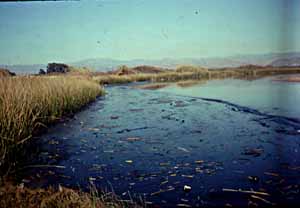Water Hardness
|
The hardness of water is due mainly to the presence of calcium and magnesium cations. The removal of hardness for the purpose of avoiding the harmful effects of it is termed water softening.The two general methods of softening water are precipitation with lime and soda ash (lime soda process), and ion exchange (sodium cation and hydrogen cation cycles). The process of softening water at ambient temperatures by adding chemicals, such as lime soda and ash was developed commercially about 100 years ago in Great Britain. |
 |
The old methods of removing ionic impurities have certain limitations. They can remove only some cations or anions, whereas demineralizers remove all of them. Nevertheless, they continue in use because they are economical: the chemicals added are less expensive than the acid and caustic soda regenerants used for demineralization, and their doses are smaller. In many water purifying projects, the old methods are included as pretreatment, and the combination results in lowest total operational cost. This pretreatment allows the demineralizers to be used as a finisher and refiner.
Click here to continue to demineralization process to prepare water for use in semiconductor industry .